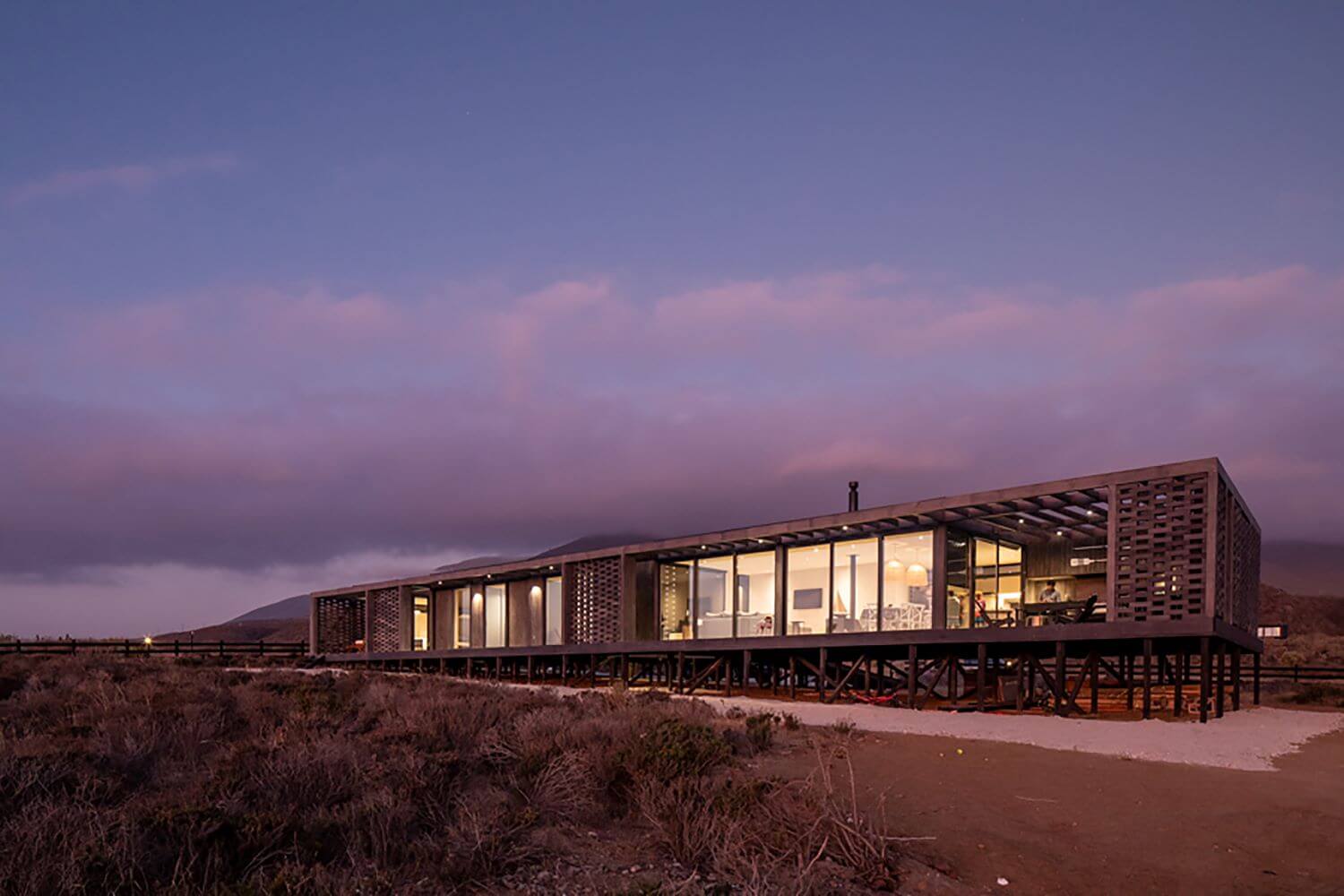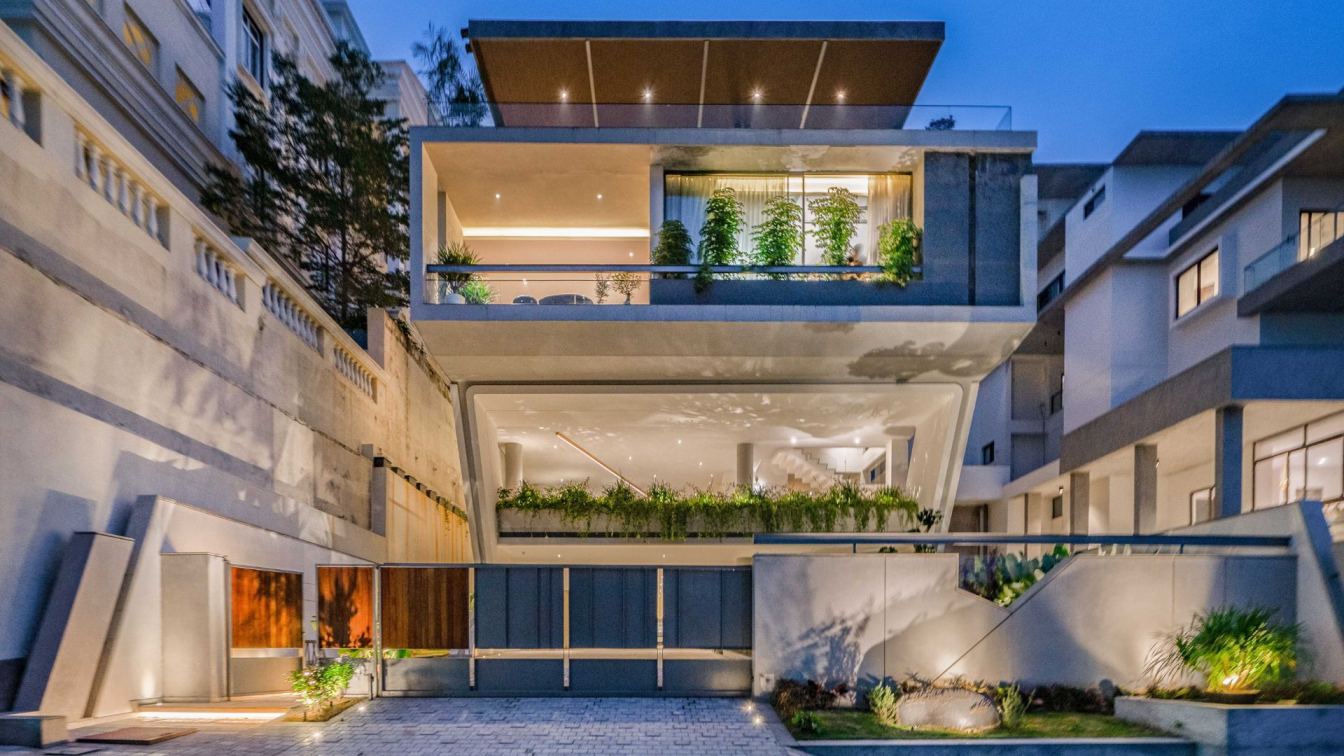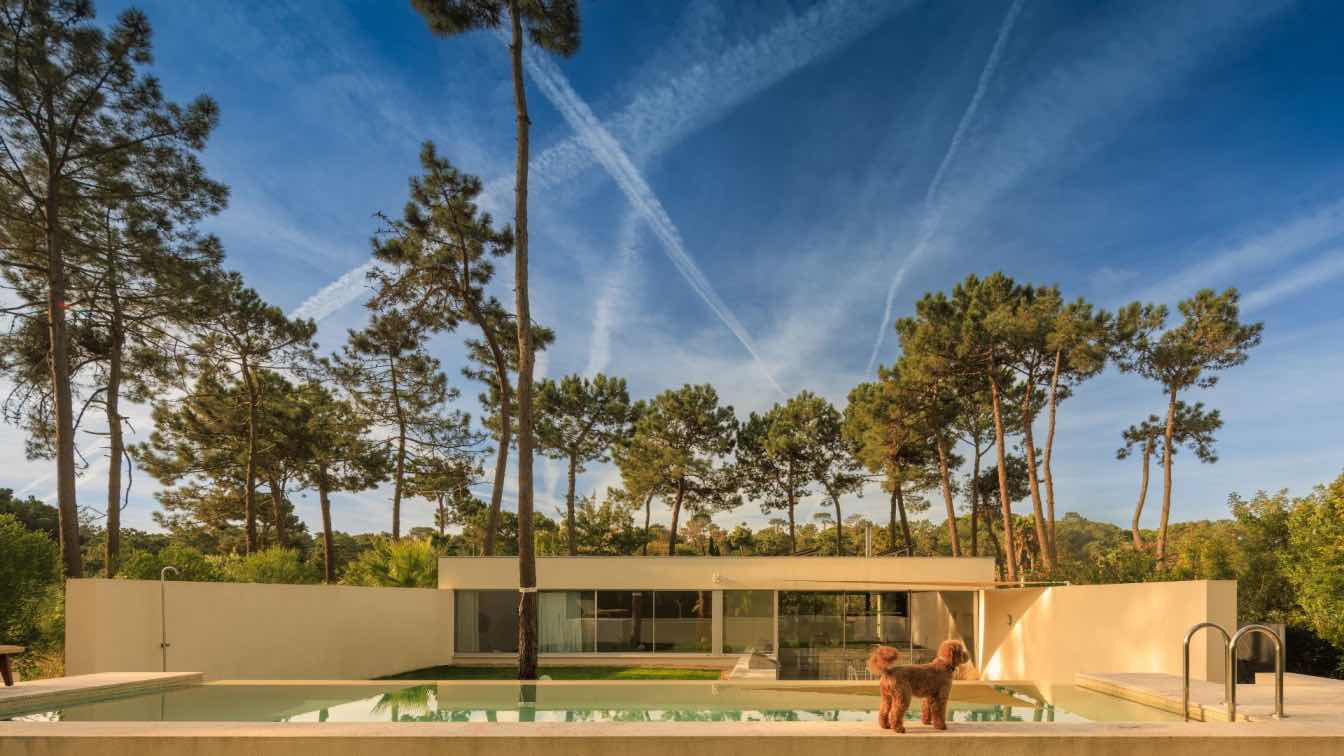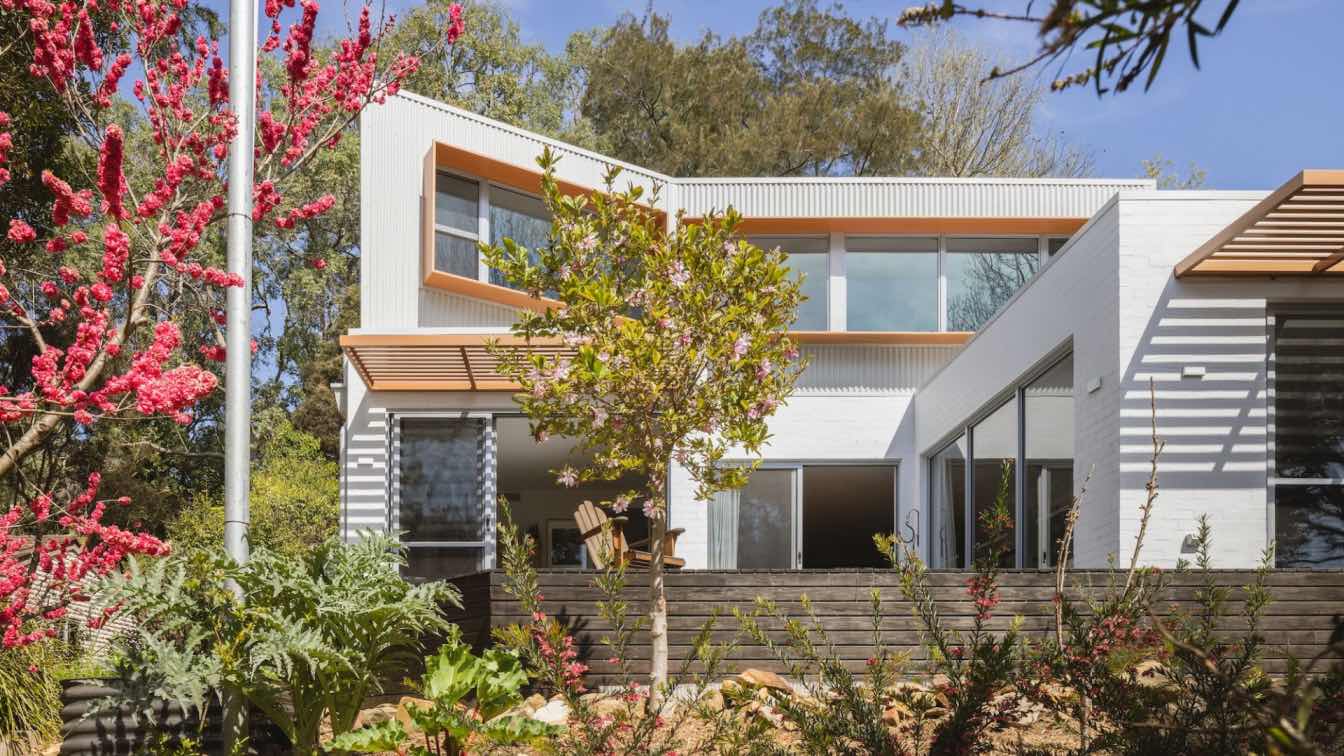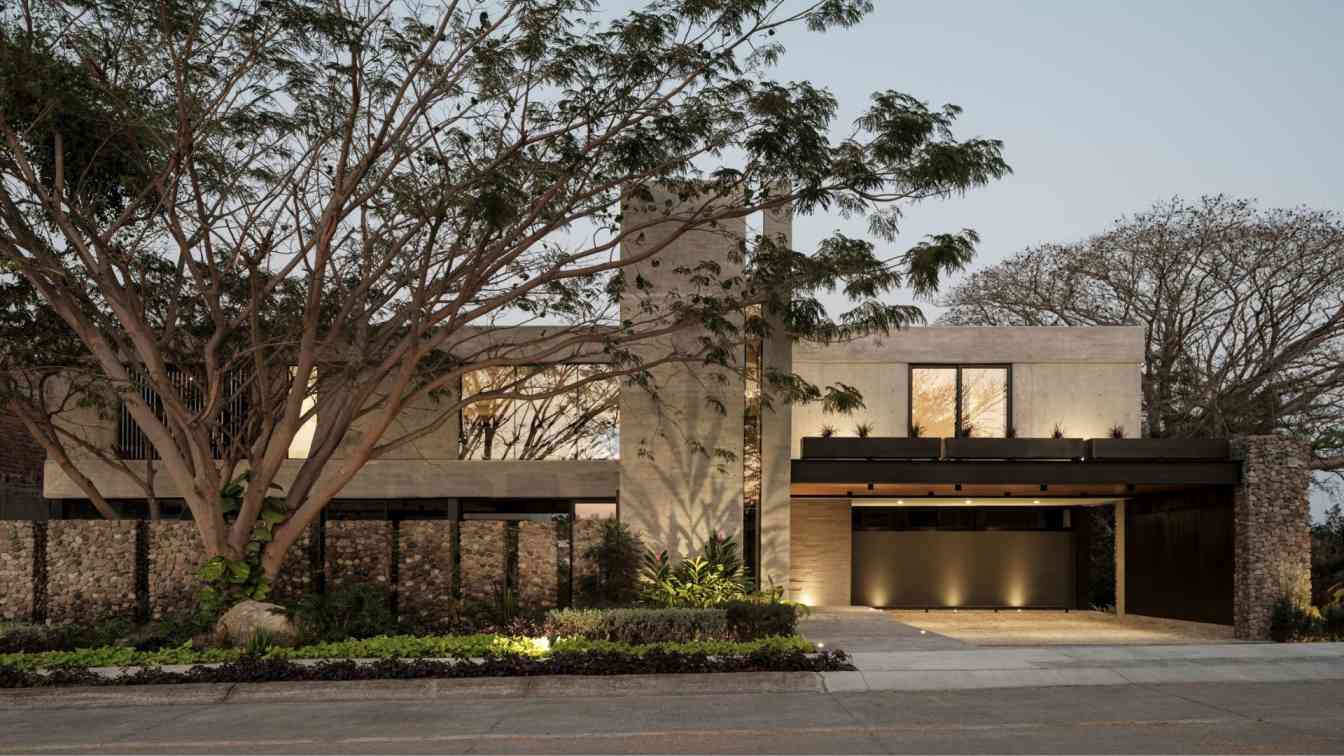Guimpert Atelier Architecture: G+D house is located in the area of Huentelauquen in Canela, Chile. A coastal desert area that is notable for its arid geography, powerful solar radiation, and predominant winds. The project seeks to transform these conditions into its main design element to provide a passive solution to these problems. In order to achieve this, a wooden skin is created flowing over the facades, which manages the solar radiation that affects them during the day. This also helps to control the wind in the orientations where it is facing, providing in return, greater privacy control.
The client was looking for a house that would reflect their lifestyle, by having a main open area where everyone could gather, including the living room, dining, kitchen, and terrace, dominating both the south valley and ocean view. The sleeping area was intended to be separated from the rest of the house by buffer zones, in order to control sound and temperature. How to dissipate the wind and have a view towards the south was one of the challenges. The solution to this issue was the use of mobile panels, which added a dynamic and transformable experience. Wood was used as the main structural material, treated within a mechanized way of production via software, to cut down construction time and ensure the perfectness of the pieces involved, reducing material loss and waste to a minimum.
What were the key challenges?
To design a house that deals with the arid geography, powerful solar radiation, and predominant winds, providing at the same time, a complete view to the ocean.

What was the brief?
A summer house in the coastal region of Huentelauquen, Canela, Chile.
What were the solutions?
A wooden skin is flowing over the facades, which manages the solar radiation that affects them during the day. This also helps to control the wind in the orientations where it is facing, providing in return, greater privacy control.
How to dissipate the wind and have a view towards the south was one of the main challenges. The solution to this issue was the use of mobile panels, which added a dynamic and transformable experience.
How is the project unique?
By the use of wooden blocks to create a transformable skin through the facades, providing a solution to control the wind and solar radiation, as well as creating dynamic spaces by the use of mobile panels.












